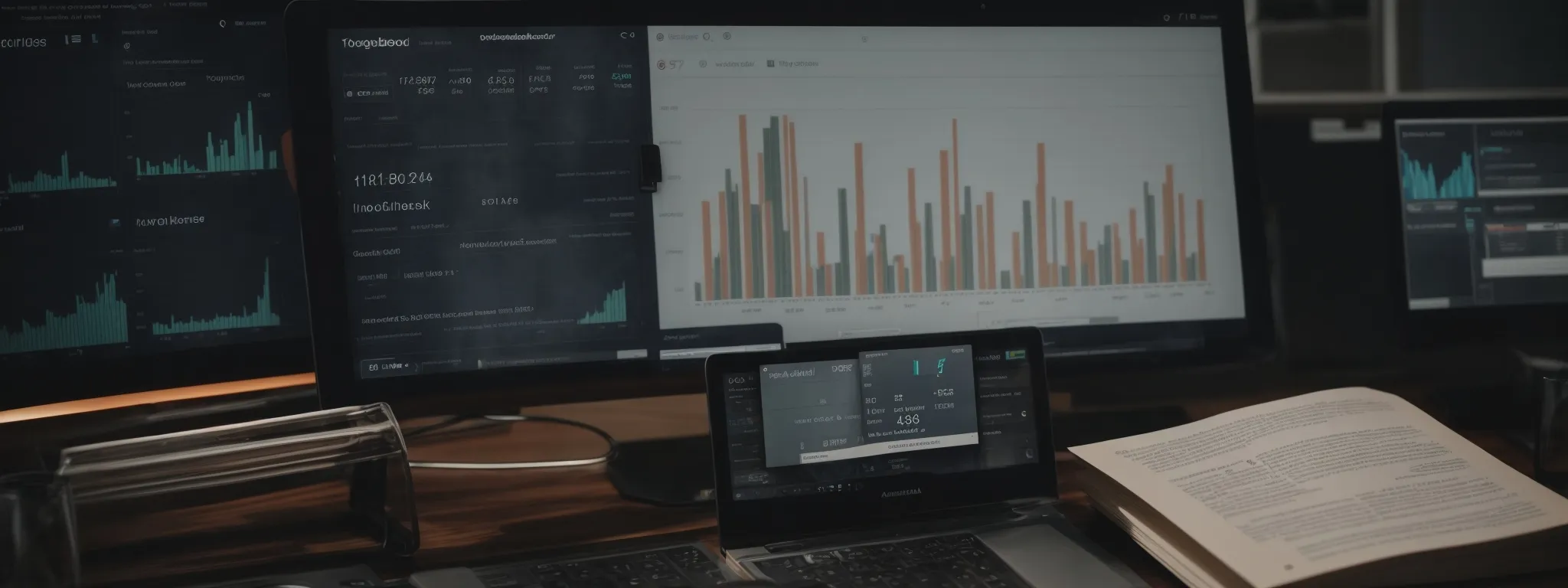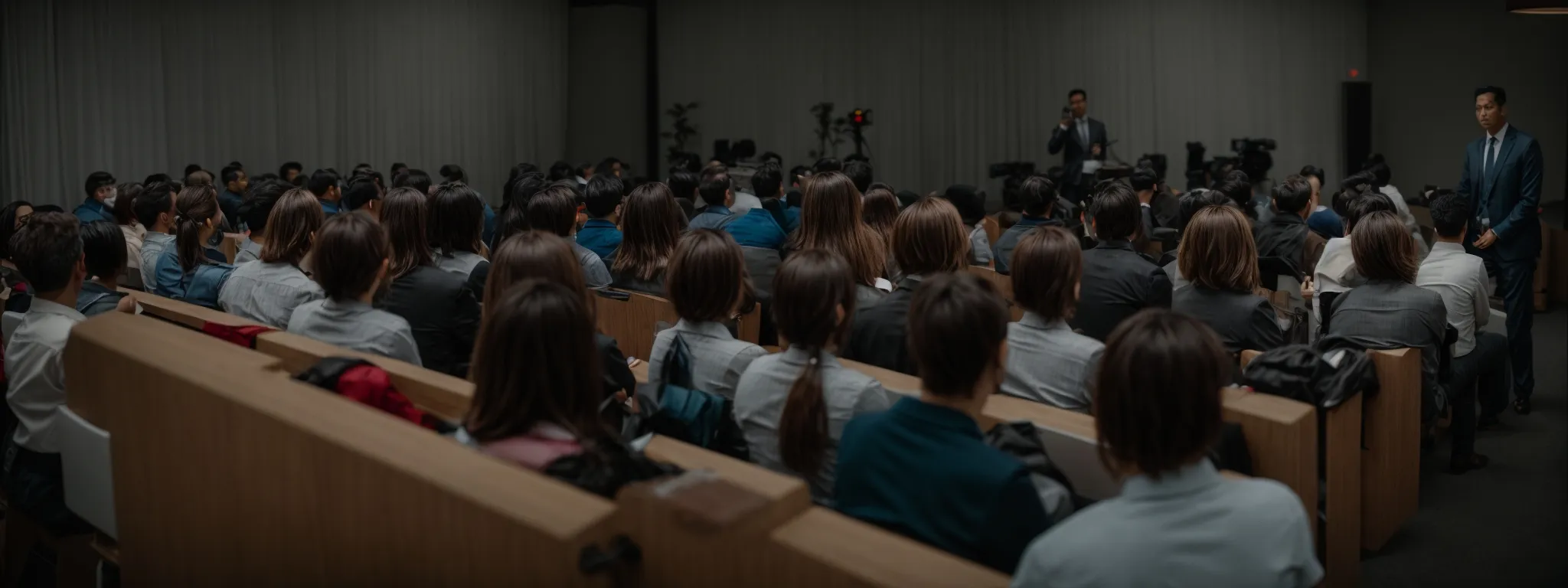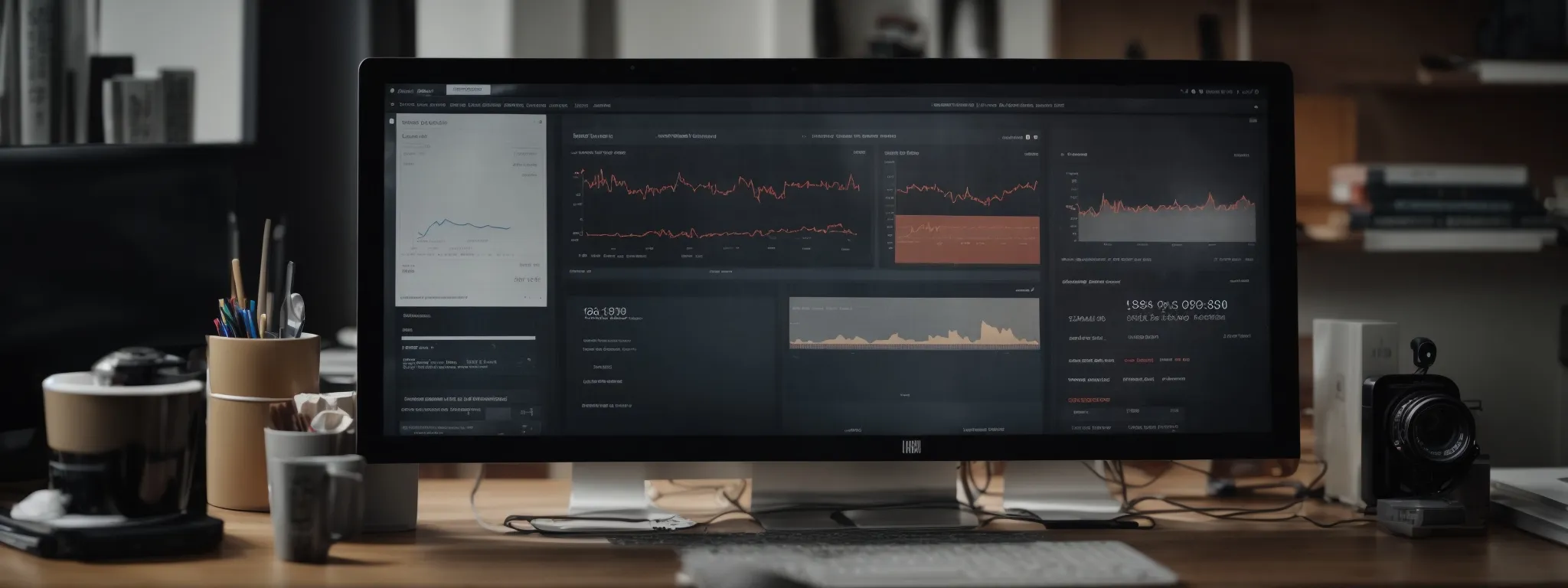On-Site SEO Factors
Essential on-Site SEO Factors for Website Optimization Navigating the nuances of on-page SEO is both an art and a science, shaping the very foundation upon which search […]
Essential on-Site SEO Factors for Website Optimization
Navigating the nuances of on-page SEO is both an art and a science, shaping the very foundation upon which search engine visibility rests.
A well-optimized website benefits not only from increased search engine ranking but also from a user experience that is seamless and engaging.
In this complex interplay of SEO elements, from meticulously crafted title tags to the strategic deployment of keywords within high-quality content, lies the potential for a substantial impact on a site’s digital presence.
The architecture that underpins a website, paired with adept internal linking, forms the bedrock for both crawlers and visitors to traverse the site with ease.
Keep reading to unlock the full spectrum of on-site SEO factors that can elevate your website’s optimization to new heights.
Key Takeaways
- Title Tags Are Critical for SEO as They Guide Search Engines and Users, and Should Be Optimized for Length and Keyword Inclusion
- Content Quality Is Paramount, Requiring Regular Updates and Structured Layouts With Headings to Support Both SEO and Readability
- An Effective Site Structure and Internal Linking Strategy Enhance User Navigation and Can Improve a Site’s Search Engine Ranking
- Alt Text for Images and the Proper Use of Schema Markup Are Detailed Components of on-Site SEO That Can Increase Search Visibility
- Regular Review and Adjustments to on-Page SEO Elements, Informed by Performance Metrics, Are Essential for Maintaining Competitive Search Rankings
Crafting SEO-Friendly Title Tags for Impact

Within the realm of on-site SEO factors, the crafting of SEO-friendly title tags emerges as a pivotal element in optimizing a website’s search engine visibility.
These tags serve as succinct yet powerful beacons guiding search engines and users through the vast digital landscape, highlighting the essence of web content.
As the initial touchpoint in search engine result pages (SERPs), title tags must be Meticulously Designed to harmonize brevity with impact.
To galvanize the efficacy of title tags, webmasters must Master the Art of Compressing the quintessential message into a precise length, embedding target keywords with surgical precision, and weaving the brand’s unique identity into this critical element of SEO architecture.
LinkGraph’s SEO services recognize this nuanced dance, providing expertise that helps redefine the way businesses approach title tag optimization, making each tag a fulcrum of relevance and attraction in the ever-evolving search rank contest.
Understand the Importance of Title Tags
Title tags reign as one of the most significant on-site SEO factors, charged with the pivotal task of signaling to search engines the primary subject of a webpage. This critical meta element not only affects search engine rankings but also acts as the primary headline for your page in the pantheon of search engine result pages (SERPs), directly influencing click-through rates (CTRs) as it determines the first impression of a user scanning the results.
LinkGraph’s SEO services adeptly tailor title tags to ensure they align with user intent, capturing the crux of the page content while simultaneously enticing the searcher. The meticulous optimization of title tags by SEO professionals at LinkGraph underpins the synthesis of visibility, relevance, and user experience, leading to a robust foundation for enhanced web page performance in the digital arena.
Optimize Title Length for Search Engines
The precision of title length plays a critical role for websites striving to stand out in search engine results: a title that is too long risks being truncated, while a brief title may fail to fully capitalize on the opportunity to include valuable keywords and compelling details. In this respect, LinkGraph’s SEO services emphasize the significance of hitting the sweet spot—a title length that respects search engines’ preferences and maximizes real estate in SERPs.
| SEO Element | Best Practices | Impact on SEO |
|---|---|---|
| Title Tag Length | Optimize within 50-60 characters | Improves visibility, prevents truncation |
LinkGraph’s team approaches title optimization with a strategy tailored to reflect the unique qualities of a client’s brand and the specific demands of their target audience. By integrating the optimal character count with Strategic Keyword Placement and brand mention, LinkGraph’s SEO services craft title tags that not only fit neatly in search engine displays but also resonate with users, thus enhancing potential for click-through and engagement.
Include Target Keywords Strategically
In the quest to elevate web page standings in search engine results, integrating target keywords into title tags is not merely a box-ticking exercise but a nuanced art form. LinkGraph’s SEO services master the deployment of these crucial search terms, weaving them into the fabric of title tags with precision conducive to Enhancing Search Engine Recognition and user relevance.
Harmony between the positioning of keywords within the title and the search rank aspirations of a website is pivotal. LinkGraph’s meticulous attention to keyword integration within title tags aims to balance prominence and context, ensuring keywords serve as beacons that guide search engines and compel users, bolstering the web page’s visibility and engagement potential.
Leverage Branding in Title Tags
Integrating a brand’s name into title tags extends beyond mere recognition; it’s a strategic move that amplifies the trustworthiness and distinctiveness of a web page in search engine result pages. LinkGraph’s SEO services excel in merging brand identity with title tag optimization, ensuring that the essence of the brand is communicated effectively, heightening brand recall and search result prominence.
With the harmonization of brand-centric keywords and a compelling narrative, LinkGraph’s SEO services carve out a niche for each client in the digital marketplace. This level of detail in title tag curation supports not only elevated search rank positions but also fortifies brand consistency across various platforms and search scenarios.
The Role of High-Quality Content in SEO

In an era where the digital landscape is fiercely competitive, high-quality content stands as a cornerstone of effective on-site SEO.
The ability to craft content that is both comprehensive and contextually relevant is indispensable for websites aiming to enhance their search engine optimization.
This entails a strategic infusion of thorough keyword research into content creation, a vigilant focus on readability, and fostering user engagement.
Simultaneously, maintaining content freshness through regular updates is necessary to preserve and amplify a website’s relevance over time.
All these facets collectively cement a website’s authority and contribute significantly to its overall SEO performance.
Create Comprehensive and Relevant Content
To create comprehensive and relevant content, SEO experts at LinkGraph harness data-driven insights and in-depth knowledge of a brand’s target audience. They pinpoint key search terms, align content with user intent, and ensure that every piece resonates with the needed depth and authority to satisfy both the user’s queries and the search engine’s algorithms.
LinkGraph’s approach to content encompasses a meticulous amalgamation of SEO strategy and erudition, crafting articles and web pages that engage, inform, and serve a clear purpose within the customer’s journey. Their content is specifically designed to fulfill searchers’ needs and is optimized to perform seamlessly across all digital touchpoints, driving organic traffic and bolstering on-site engagement.
Incorporate Keyword Research Into Writing
LinkGraph’s SEO services integrate comprehensive keyword research as the linchpin of content writing, underpinning the essence of a high-ranking web page. By identifying and inserting relevant search terms, LinkGraph ensures that the text not only garners the attention of search engines but also echoes the queries and needs of the target audience.
The strategic placement of keywords within the content’s fabric, grounded in LinkGraph’s in-depth analysis, propels a symbiotic relationship between user search intent and writing. This meticulous approach helps fortify a web page’s relevance and authority, priming it for superior search engine results:
| SEO Strategy Component | Action by LinkGraph | Outcome for SEO |
|---|---|---|
| Keyword Research | Analyze search terms; integrate into content | Increase in relevance; higher search ranking |
| Keyword Integration | Strategic placement within writing | Alignment with user intent; improved user engagement |
Focus on Readability and User Engagement
Essential to the foundation of on-site SEO, readability and user engagement dictate a website’s capacity to captivate and retain visitors. LinkGraph’s SEO services prioritize crafting content not only rich in information but also structured in a manner that allows for seamless navigation and comprehension, fostering an environment where user satisfaction is paramount and bounce rates are minimized.
Focused on amplifying user engagement, LinkGraph ensures each paragraph, image, and call-to-action is strategically placed to guide the visitor’s journey, engendering interaction that fuels SEO performance. By leveraging these critical factors, LinkGraph’s SEO content strategy transcends mere keyword inclusion, delivering an immersive experience that resonates with audiences and solidifies a website’s stature within its niche.
Update Content Regularly to Maintain Relevance
In a digital landscape where stagnation equates to obsolescence, regular content updates are not optional; they are imperative. LinkGraph’s SEO services emphasize the importance of refreshing web page material, which reassures search engines of a website’s ongoing pertinence and commitment to user demands, thereby cementing its rank and visibility.
Content that evolves in tandem with industry trends and user expectations is the hallmark of a progressive online presence. LinkGraph’s strategists are aware that through the intelligent infusion of new insights and timely information into existing web pages, they can sustain and amplify the content’s resonance with its audience, securing its place in the dynamic ecosystem of search engine results.
Optimizing Headings for Better Content Structure

The architecture of a webpage relies heavily on a hierarchy that is both logical and SEO-efficient, and within this structure, headings play a crucial role.
They not only orchestrate content into digestible segments for readers, but also signal to search engines the hierarchy and relevance of the information presented.
It is within this stratification that H1 tags stand as sentinels for main titles, H2 and H3 tags serve as sub-dividers, enhancing the readability and flow, and sensible keyword inclusion within these headings aids in fine-tuning the website’s on-site SEO framework.
LinkGraph’s SEO services are acutely aware of the importance of optimizing these elements as they construct a robust foundation for website optimization, sculpting headings that contribute to overall SEO success while enriching the user’s navigational experience.
Utilize H1 Tags for Main Titles Effectively
Effective utilization of H1 tags is foundational to on-site SEO, acting as a beacon for both site visitors and search engine algorithms. LinkGraph’s SEO services facilitate this by ensuring that the primary header on each webpage is wrapped in an H1 tag, distinctively signifying the topic at hand and affirming its primary focus within the site’s content hierarchy.
LinkGraph’s calibrated approach to on-page SEO extends to the considered placement of H1 tags, which not only encapsulates the essence of the content but also aligns with strategic keywords to amplify a webpage’s search engine visibility. This deft execution ensures that each web page commences with a title that is SEO-optimized and user-centric, leading to enhanced search result prominence and user engagement.
Break Down Content With H2 and H3 Tags
LinkGraph’s SEO services adeptly employ H2 and H3 tags to impose a clear and effective structure upon web page content, ensuring that readers can easily navigate through the various sections and grasp the overarching theme of the discourse. This breakdown not only aids in the user’s comprehension but also delineates content in a way that search engine crawlers can readily understand and index, boosting the website’s search engine optimization quotient.
The strategic application of these tags by LinkGraph’s professionals is deliberate, enhancing the organization of content and signaling the relative importance of topics and subtopics. Each heading is meticulously crafted to incorporate relevant keywords without sacrificing the natural flow of the article, striking a balance between SEO benefits and offering a seamless reading experience for the site visitor.
Include Keywords in Headings Sensibly
Incorporating keywords into headings demands a level of finesse that can determine the page’s relevancy in the eyes of search engines and users alike. LinkGraph’s SEO services excel at embedding keywords into headings in a manner that enhances search engine recognition while maintaining the integrity and readability of the content for the audience, ensuring that every heading contributes meaningfully to the page’s thematic structure.
LinkGraph’s expertise extends to the deliberate placement of targeted search terms within H1, H2, and H3 tags, ensuring these keywords act as validators of content pertinence without overriding the natural linguistic flow. This strategic inclusion elevates the content’s visibility in SERPs and seamlessly guides users through the narrative, creating a cohesive user experience that is both informative and SEO-conscious.
Improving Site Architecture for Enhanced SEO

Site architecture lays the foundation for a user’s journey through a website and significantly impacts its visibility to search engines.
An optimized site structure offers a dual benefit; it facilitates easier navigation for users while enabling search engines to index the website more efficiently, both of which are crucial for higher search rankings.
Expertly enhancing site architecture involves several critical adjustments—developers and SEO strategists must ensure that the navigation system is intuitive, loading speed is optimized for peak performance, and the design adapts flawlessly across various devices to accommodate the burgeoning mobile audience.
Each modification is a calculated step by LinkGraph’s SEO services to advance a website’s on-site SEO factors, promoting an impeccable user experience and solidifying search engine recognition.
Design a User-Friendly Navigation System
LinkGraph’s SEO services excel in Devising Navigation Systems that prioritize ease of use, ensuring that users can find information swiftly, thus reducing bounce rates and increasing the likelihood of conversion. An intuitively structured navigation menu acts as a roadmap, directing visitors efficiently through the website’s various sections, which in turn signals to search engines a commitment to providing a superior user experience.
Central to the offerings of LinkGraph is the emphasis on a navigation design that resonates with the behavior patterns of modern internet users. Acknowledging the need for instantaneity in information retrieval, LinkGraph’s SEO services implement navigation that is both responsive and clear, aiding in guiding users toward their desired content with minimal clicks, thereby fostering a positive interaction with the brand.
Improve Website Loading Speed
Understanding the criticality of loading speed, LinkGraph’s SEO services harness state-of-the-art techniques to minimize page load times. LinkGraph’s specialists focus on streamlining code, leveraging browser caching, and compressing images to ensure a website operates at the pinnacle of efficiency, recognizing that each second reduced from the loading time translates to improved user retention and search engine rankings.
Through continuous monitoring and adjustment of a website’s technical elements, LinkGraph’s SEO services aim to significantly reduce the time it takes for a page to become interactive. This dedicated pursuit of optimal page speed stems from an awareness of its influence on a website’s user experience, bounce rates, and its ability to climb the search engine result pages.
Ensure Mobile Responsiveness
LinkGraph’s SEO services prioritize mobile responsiveness, embracing the paradigm shift toward mobile-first indexing by search engines. Recognizing the surge in mobile traffic, their strategists ensure that websites exhibit flawless functionality and aesthetic integrity across various devices, thereby securing both user approval and search engine favorability.
Staying attuned to the nuances of mobile user experience, LinkGraph meticulously optimizes website design for touch interactions and screen adaptability. This focused attention to mobile responsiveness not only caters to the increasing number of on-the-go users but also aligns with Google’s emphasis on mobile usability as a critical SEO ranking factor.
Strategic Internal Linking to Boost SEO

In the pursuit of optimizing a website for search engine success, strategic internal linking serves as a powerful tool within the armamentarium of on-site SEO factors.
It establishes a network of paths that guide users to relevant content, thereby enhancing the navigational efficacy of a site.
Effective use of descriptive anchor text further enriches this interconnected web, as it grants both users and search engines clear signals about the content that lies beyond each link.
By meticulously managing the distribution of link equity to the most pivotal pages, LinkGraph’s SEO services sculpt a well-ordered and deliberate hierarchy that boosts the site’s overall search engine performance and ranking potential.
Link to Relevant Content Within Your Site
LinkGraph’s SEO services understand the importance of linking to pertinent content within a site to create a coherent journey for the user. Deploying Strategic Internal Links ensures visitors encounter relevant information with ease, thereby enhancing user engagement and retention.
For search engines, this technique by LinkGraph entails a thoughtful arrangement that clarifies a site’s structure, directing crawlers to a well-defined map of interconnected content. This internal linking not only improves navigation but also assists in establishing site authority and relevance for targeted search terms.
Use Descriptive Anchor Text for Links
LinkGraph’s SEO services accentuate the use of descriptive anchor text in internal linking, a practice that greatly enhances the clarity and effectiveness of a website’s link structure. Through articulating anchor text that accurately reflects the content of the target page, LinkGraph ensures that users, as well as search engines, garner a precise understanding of what to expect upon clicking a link.
This specificity in anchor text directly contributes to a more intuitive user experience and bolsters a site’s SEO profile by establishing clear topical relationships between pages. Thus, LinkGraph’s precision in choosing the right words for anchor text enriches the site’s navigational flow and search relevance:
| SEO Implementation | Anchor Text Strategy | User and SEO Benefit |
|---|---|---|
| Descriptive Anchor Text | Select words that mirror linked page content | Enhances user experience, clarifies content relevance |
Manage Link Flow to Important Pages
LinkGraph’s SEO services meticulously delineate the flow of internal links towards pivotal pages, recognizing that directing link equity judiciously across the site amplifies the prominence of key content. Their approach ensures that strategic pages receive the attention they warrant, bolstering their capacity to rank highly in SERPs and attract substantial traffic.
LinkGraph’s expertise in SEO entails crafting a deliberate link architecture that maximizes the visibility and authority of important pages. They adeptly employ internal linking to create a logical pathway for search engine crawlers, enhancing the opportunity for these pages to feature prominently in a user’s search journey.
Highlight E-a-T Signals for Trust and Authority

In the contemporary digital era, search engines increasingly prioritize websites that exhibit strong signals of expertise, authoritativeness, and trustworthiness—collectively known as E-A-T.
These signals serve as vital components of a website’s on-site SEO factors, essentially acting as trustmarks that search engines use to evaluate content quality and reliability.
By showcasing author expertise, curating credible outbound links and citations, and highlighting positive user reviews and testimonials, websites can substantively reinforce their integrity and value to both users and search engines.
LinkGraph’s SEO services adeptly guide websites through this multifaceted process, cultivating a trustworthy online presence that resonates with search algorithms and fosters user confidence.
Showcase Author Expertise and Credentials
LinkGraph’s SEO services imbue a website with credibility by strategically showcasing the expertise and credentials of authors. This not only enhances the perceived value of the content but also assures search engines and users alike of the information’s accuracy and trustworthiness.
Through the careful curation of bios and highlighting professional accomplishments and certifications, LinkGraph establishes authority, which search engines like Google regard highly when assessing content quality within their algorithms. This increased authority can lead to more favorable rankings and user perception.
Gather Credible Outbound Links and Citations
Incorporating credible outbound links and citations into website content is not a mere embellishment but a critical on-site SEO practice that LinkGraph’s SEO services prioritize: it signifies to search engines the research depth and authoritative breadth of the web page.
- LinkGraph identifies authoritative sources relevant to the content’s subject matter.
- Search engines use these outbound links as indicators of the content’s credibility and context within a broader knowledge framework.
By selecting outbound links that are both pertinent and esteemed, LinkGraph meticulously enhances the informational value of the page while nurturing its standing in the eyes of search algorithms and users alike. This judicious citation of respected sources acts as a testament to a website’s dedication to providing fact-checked and reliable information, bolstering its authority and trustworthiness in the competitive digital space.
Encourage User Reviews and Testimonials
LinkGraph’s SEO services advocate for the integration of user reviews and testimonials as a robust indicator of a website’s reputability. These endorsements essentially serve as social proof that amplifies trust in the brand, encouraging search engines to value the site for its demonstrated user satisfaction.
The inclusion of genuine customer feedback within a site’s content elevates the transparency and authenticity perceived by visitors. LinkGraph ensures these testimonials are prominently featured, as they can directly impact the website’s credibility, fostering higher confidence from both potential customers and search engine algorithms.
Leveraging Image Alt Text for SEO

As businesses sculpt their web presence to enhance search engine visibility, image optimization, specifically through alt text, emerges as a key on-site SEO factor.
This often-overlooked element not only makes web content more accessible, but also endows images with SEO value.
Mastery in describing images with relevant keywords, crafting alt text that’s concise and indicative of the image content, and the judicious optimization of image file names prior to upload, intertwines accessibility with strategic SEO.
As a cornerstone of LinkGraph’s comprehensive SEO services, leveraging alt text appropriately ensures that each visual asset contributes positively to the overall SEO landscape of a website.
Describe Images With Relevant Keywords
Striking a delicate balance between accessibility and search relevancy, LinkGraph’s SEO services deploy image alt text imbued with relevant keywords that succinctly encapsulate the visual content. This annotation serves a dual purpose: assisting screen readers for users with visual impairments and imbuing the imagery with SEO potential through strategic keyword inclusion.
The process of enhancing a website’s image SEO through alt text as administered by LinkGraph involves:
- Analyzing the image to understand its context and relevance to the page content.
- Selecting keywords that are both accurate to the image and influential for the website’s SEO goals.
- Constructing alt descriptions that are brief yet descriptive, reflecting the subject matter of the visual while optimizing for search engine crawlers.
Through this calculated effort, LinkGraph ensures that every image becomes an integral part of the website’s SEO narrative, reinforcing the theme and keywords of the related web page content while adhering to best practices in digital accessibility.
Keep Alt Text Concise and Clear
In the discipline of optimizing image alt text, LinkGraph’s SEO services accentuate conciseness and clarity, ensuring the alternative descriptions are sufficiently informative without being verbose. The focus is on crafting alt text that encapsulates the essence of the image succinctly, aligning with both the practical needs of users relying on screen readers and the SEO imperatives of keyword optimization.
LinkGraph imparts a principle to its clients that alt text should unambiguously convey the content of an image and its function within the page, using an economy of words. This approach guarantees that search engines can readily parse and index the image content, enhancing accessibility while maintaining the web page’s stylish and uncluttered aesthetic.
Optimize File Names of Images Before Uploading
Before any visual is introduced to a webpage, LinkGraph’s SEO services implement a critical but frequently ignored practice: the optimization of image file names. Each file is named with clear, descriptive language, incorporating relevant keywords that enhance the image’s SEO value and contribute to a page’s search engine visibility.
Conscious of the indexing processes employed by search engines, LinkGraph’s professionals ensure that every uploaded image bears a file name that reflects the content succinctly, thereby enabling search engines to make more accurate associations between the image and the subject matter of its corresponding web page.
Utilizing Schema Markup for Rich Snippets

In an online ecosystem where standing out in search engine result pages is paramount, harnessing the power of schema markup emerges as an essential on-site SEO factor.
Meticulously structured data, when coded correctly, can result in rich snippets—those enhanced search results that can vault a website into the spotlight of relevancy.
By selecting the appropriate schema type, implementing structured data scrupulously, and rigorously testing for precision, LinkGraph’s SEO services meticulously optimize website content to communicate more effectively with search engines, providing a clear path to improved click-through rates and user engagement.
Choose the Right Schema Type for Your Content
Selecting the appropriate schema type is pivotal for enhancing a web page’s communication with search engines. LinkGraph’s SEO services analyze the content’s nature and goals to determine the most beneficial schema for a given page, be it for an article, product, event, or person.
LinkGraph ensures that the chosen schema type aligns seamlessly with the content’s intent and the desired outcomes in search performance. Proper schema implementation by their professionals leads to detailed rich snippets that capture user attention and drive engagement:
| Content Type | Chosen Schema Type | Expected Outcome |
|---|---|---|
| Article | ArticleSchema | Enhanced SERPs visibility with article details |
| Product | ProductSchema | Rich snippets featuring price and availability |
| Event | EventSchema | Inviting event displays with date and location |
| Person | PersonSchema | Detailed snippets with biographical information |
Implement Structured Data to Feed Search Engines
Structured data provides a lexicon for search engines to comprehend the contents of a website with unprecedented fidelity. LinkGraph’s SEO services integrate structured data by annotating web page elements with precise vocabulary from schema.org, thus enhancing the ability of search engines to parse and display information in rich, informative snippets.
In the meticulous process of implementing structured data, LinkGraph’s SEO services elevate the eloquence with which a website communicates specifics to search engines, transposing raw data into a well-articulated schema. This transmutation not only fosters search engines’ understanding of page context but also paves the way for elevated engagement via rich search results that capture users’ attention.
Test Schema Markup for Accuracy
Thorough testing is a definitive step in LinkGraph’s SEO services, ensuring that all structured data is accurately implemented and functioning as intended. This essential verification process involves utilizing tools like the Google Structured Data Testing Tool or the Schema Markup Validator, which scrutinize the markup to confirm its correct setup and visibility to search engines.
LinkGraph’s commitment to precision in structured data is evident as their experts meticulously test schemas to guarantee rich snippet generation that aligns with client objectives. This attention to detail secures a flawless user experience and bolsters the probability of enhanced click-through rates due to more informative and appealing search results:
| SEO Task | Action by LinkGraph | Expected SEO Outcome |
|---|---|---|
| Structured Data Testing | Analyze and validate schema markup | Eliminate implementation errors; Boost SERPs visibility |
| Rich Snippet Verification | Ensure accuracy in search display | Improve user interaction; Increase click-through rate |
On-Page SEO Factors Checklist Recap

In the intricate web of on-site search optimization, continual vigilance and adaptation are the keystones to enduring success.
As businesses crystallize their digital presence, regular scrutiny of critical on-page SEO factors becomes indispensable, serving as a mechanism for maintaining and enhancing website performance.
With the search landscape undergoing perpetual evolution, staying apprised of search performance metrics while concurrently aligning with the latest in SEO best practices fortifies a website’s relevance and efficacy—a mandate to which LinkGraph’s SEO services are unwaveringly attuned.
Review Critical on-Page Elements Regularly
To maintain a website’s competitive edge, regular reviews of on-page SEO components are indispensable. LinkGraph’s SEO services ensure that key elements such as title tags, meta descriptions, and header tags are not only present but optimized to current standards, ensuring a website remains aligned with the continuously evolving nuances of search engine algorithms.
LinkGraph’s comprehensive audits extend to the scrutiny of keyword usage and content quality, guaranteeing that information stays relevant and authoritative for both users and search crawlers. An ongoing assessment of these critical SEO elements secures the longevity and vitality of a website’s search performance:
| SEO Element | Review Focus | Impact on SEO |
|---|---|---|
| Title Tags | Optimization and freshness | Enhances relevance and rankings |
| Meta Descriptions | Compelling call-to-action | Improves click-through rates |
| Header Tags | Strategic use of keywords | Aids in structure and emphasis |
| Keyword Optimization | Relevance and density checks | Promotes topical authority |
| Content Quality | Accuracy, authority, and engagement | Sustains traffic and user interest |
Monitor Search Performance and Adjust Accordingly
Constant monitoring of search engine performance metrics is an action point that LinkGraph’s SEO services hold in high regard. This vigil from LinkGraph’s experts captures fluctuations in search rank, allowing for precise, data-informed modifications to on-page elements that remain responsive to search engine updates and user behavior trends.
Adjustments carried out with meticulous intent not only refine a website’s SEO alignment but also optimize its potential to achieve desired outcomes. LinkGraph’s strategic adjustments, therefore, are acts of fine-tuning, enhancing a website’s performance and securing its competitiveness in the digital landscape:
| SEO Activity | Core Focus | Intended Benefit |
|---|---|---|
| Performance Metrics Monitoring | Analyze ranking shifts and user engagement | Inform SEO adjustments for improved SERP positioning |
| On-Page Element Optimization | Refine tags, content, and structure | Amplify visibility and search engine receptiveness |
Stay Updated With SEO Best Practices
LinkGraph’s SEO services place a premium on the constant acquisition of knowledge in the realm of SEO best practices. Recognizing that the field is dynamic, with algorithms and guidelines shifting, their professionals invariably stay abreast of the latest trends and updates to ensure client strategies are not only current but also poised for future developments.
This dedication to continuous learning permits LinkGraph to adjust and refine their client’s SEO strategies with agility, implementing cutting-edge techniques that safeguard and propel the website’s search engine standing. In doing so, they uphold a standard of SEO excellence that is both responsive to the present and anticipatory of the digital landscape’s evolution.
Conclusion
In conclusion, essential on-site SEO factors play a critical role in optimizing a website for search engines and enhancing the user experience.
Meticulous crafting of SEO-friendly title tags, optimizing content with targeted keywords, and maintaining a clear structure with a user-friendly site architecture stand at the forefront of effective SEO strategies.
Incorporating descriptive alt text for images and leveraging schema markups are also key practices for improving search visibility.
LinkGraph’s SEO services highlight the importance of regular updates and reviews of on-page elements, merging best practices with continuous monitoring and adjustments to search performance.
Staying updated with the latest SEO trends ensures that a website not only meets current standards but is also prepared for future algorithmic changes.
By focusing on these essential on-site factors, websites can significantly boost their search engine rankings, attract more traffic, and offer better engagement with their audience.














































































